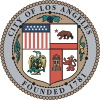
Angela Yvonne Davis is an American Marxist and feminist political activist, philosopher, academic, and author; she is a professor at the University of California, Santa Cruz. Davis was a longtime member of the Communist Party USA (CPUSA) and a founding member of the Committees of Correspondence for Democracy and Socialism (CCDS). She writes extensively on class, gender, race, and the U.S. prison system.
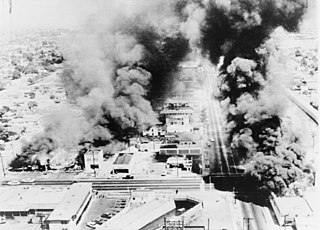
The Watts riots, sometimes referred to as the Watts Rebellion or Watts Uprising, took place in the Watts neighborhood and its surrounding areas of Los Angeles from August 11 to 16, 1965.
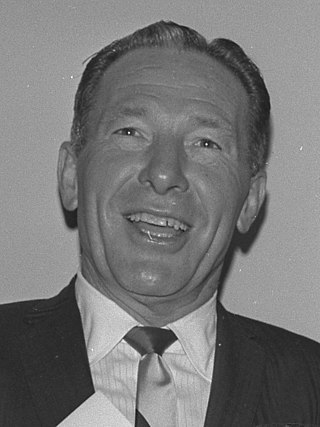
Samuel William Yorty was an American politician, attorney, and radio host from Los Angeles, California. He served as a member of the United States House of Representatives and the California State Assembly, but he is most remembered for his turbulent three terms as the 37th Mayor of Los Angeles from 1961 to 1973. Though Yorty spent almost all of his political career as a Democrat, he became a Republican in 1980.

Thomas Bradley was an American politician and police officer who served as the 38th Mayor of Los Angeles from 1973 to 1993. He was the first black mayor of Los Angeles, and his 20 years in office mark the longest tenure by any mayor in the city's history. His election as mayor in 1973 made him the second black mayor of a major U.S. city. Bradley retired in 1993, after his approval ratings began dropping subsequent to the 1992 Los Angeles Riots.

Michael Ryan Davis was an American writer, political activist, urban theorist, and historian based in Southern California. He is best known for his investigations of power and social class in works such as City of Quartz and Late Victorian Holocausts. His last two non-fiction books are Set the Night on Fire: L.A. in the Sixties, co-authored by Jon Wiener, and The Monster Enters: COVID-19, Avian Flu, and the Plagues of Capitalism

The 1992 Los Angeles riots, sometimes called the Rodney King riots or the 1992 Los Angeles uprising, were a series of riots and civil disturbances that occurred in Los Angeles County, California, in April and May 1992. Unrest began in South Central Los Angeles on April 29, after a jury acquitted four officers of the Los Angeles Police Department (LAPD) charged with using excessive force in the arrest and beating of Rodney King. This incident had been videotaped and widely shown in television broadcasts.
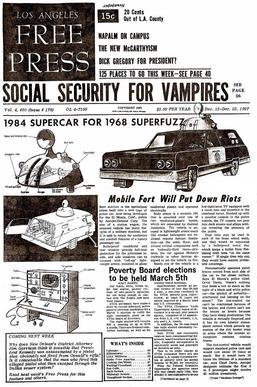
The Los Angeles Free Press, also called the "Freep", is often cited as the first, and certainly was the largest, of the underground newspapers of the 1960s. The Freep was founded in 1964 by Art Kunkin, who served as its publisher until 1971 and continued on as its editor-in-chief through June 1973. The paper closed in 1978. It was unsuccessfully revived a number of times afterward.
Marc Cooper is an American journalist, author, journalism professor and blogger. He is a contributing editor to The Nation. He wrote the popular "Dissonance" column for LA Weekly from 2001 until November 2008. His writing has also appeared in such publications as the Los Angeles Times, The Atlantic Monthly, Harper's Magazine, The New Yorker, The Christian Science Monitor, Playboy and Rolling Stone. His translated work has been published in various European and Latin American publications, including the French daily Liberation and the Mexico City-based dailies La Jornada and Uno Mas Uno. He has also been a television producer for PBS, CBS News, and The Christian Science Monitor. His radio reports have aired on NBC, Canadian Broadcasting Corporation and the BBC. During the 2008 presidential campaign he worked as editorial coordinator of The Huffington Post's citizen-journalism project OffTheBus as well as a senior editor of the overall site.
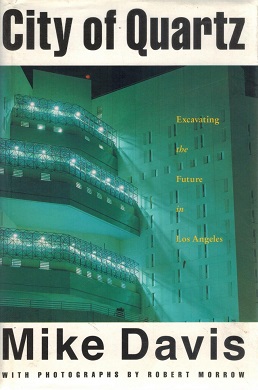
City of Quartz: Excavating the Future in Los Angeles is a 1990 book by Mike Davis examining how contemporary Los Angeles has been shaped by different powerful forces in its history. The book opens with Davis visiting the ruins of the socialist community of Llano, organized in 1914 in what is now the Antelope Valley north of Los Angeles. The community moved in 1918, leaving behind the "ghost" of an alternative future for LA.
Quincy Thomas Troupe, Jr. is an American poet, editor, journalist and professor emeritus at the University of California, San Diego, in La Jolla, California. He is best known as the biographer of Miles Davis, the jazz musician.

Don Winslow is an American retired author best known for his award-winning and internationally bestselling crime novels, including Savages, The Force and the Cartel Trilogy.
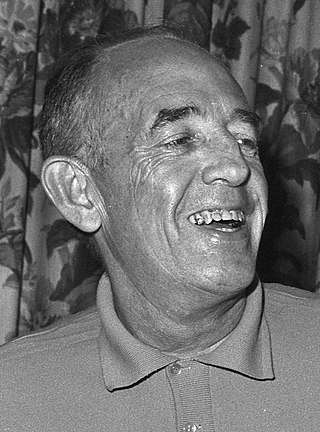
William Henry Parker III was an American law enforcement officer who was Chief of the Los Angeles Police Department (LAPD) from 1950 to 1966. To date, he is the longest-serving LAPD police chief. Parker has been called "Los Angeles' greatest and most controversial chief of police". The former headquarters of the LAPD, the Parker Center, was named after him. During his tenure, the LAPD was known for police brutality and racism; Parker himself was known for his "unambiguous racism".

Jon Wiener is an American historian and journalist based in Los Angeles, California. His most recent book is Set the Night on Fire: L.A. in the Sixties, a Los Angeles Times bestseller co-authored by Mike Davis. He waged a 25-year legal battle to win the release of the FBI's files on John Lennon. Wiener played a key role in efforts to expose the surveillance, as well as the behind-the-scenes battling between the government and the former Beatle, and is an expert on the FBI-versus-Lennon controversy. A professor emeritus of United States history at the University of California, Irvine and host of The Nation's weekly podcast, Start Making Sense, he is also a contributing editor to the progressive political weekly magazine The Nation. He also hosts a weekly radio program in Los Angeles.

Emory Douglas is an American graphic artist. He was a member of the Black Panther Party from 1967 until the Party disbanded in the 1980s. As a revolutionary artist and the Minister of Culture for the Black Panther Party, Douglas created iconography to represent black-American oppression.

The Black Panther Party was a Marxist-Leninist and black power political and criminal organization founded by college students Bobby Seale and Huey P. Newton in October 1966 in Oakland, California. The party was active in the United States between 1966 and 1982, with chapters in many major American cities, including San Francisco, New York, Chicago, Los Angeles, Seattle, and Philadelphia. They were also active in many prisons and had international chapters in the United Kingdom and Algeria. Upon its inception, the party's core practice was its open carry patrols ("copwatching") designed to challenge the excessive force and misconduct of the Oakland Police Department. From 1969 onward, the party created social programs, including the Free Breakfast for Children Programs, education programs, and community health clinics. The Black Panther Party advocated for class struggle, claiming to represent the proletarian vanguard.
Personal Rights in Defense and Education (PRIDE) was a gay political organization. Established in 1966 as a radical gay political organization that from its origination set a new tone for gay political groups like the Gay Liberation Front (GLF), ACT UP and the Radical Faeries. PRIDE led aggressive, unapologetic, demonstrations against the oppression by the Los Angeles Police Department (LAPD) of gay gatherings or same-sex meetings in the city of Los Angeles. PRIDE's monthly single-page newsletter evolved into The Advocate, the nation's longest running gay news publication.

This is a bibliography of Los Angeles, California. It includes books specifically about the city and county of Los Angeles and more generally the Greater Los Angeles Area. The list includes both non-fiction and notable works of fiction that significantly relate to the region. The list does not include annual travel books, recipe books, and currently does not contain works about sports in the region.
Surfin' Guitars: Instrumental Surf Bands of the Sixties is a book by Robert J. Dalley which covers the instrumental side of the surf genre in the 1960s and looks at groups and artists from that era. It has been published three times with the first version published in 1988 and the third in 2015. It has been quoted and referred to multiple times in books relating to surf music.
Chris Morris is a music writer based in Los Angeles, California. He is known for his coverage of L.A.'s independent scene in the 1970s and 1980s, which made him "a central voice in Left Coast music journalism." He has also written well-received books on Los Lobos and Bob Dylan.
The 1967 Century City demonstrations, also known as the 1967 Century City police riots, was an anti-Vietnam War protest which took place on June 23, 1967, in the Century City neighborhood of Los Angeles. Beginning with a demonstration against the war by an estimated 10,000 protestors, the march was soon stopped and LAPD officers began attacking believing that a mob was forming. In the end, 51 arrests were made and an unknown number of protesters were left injured.


















